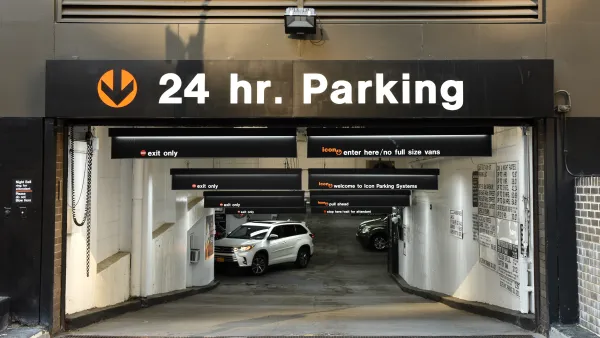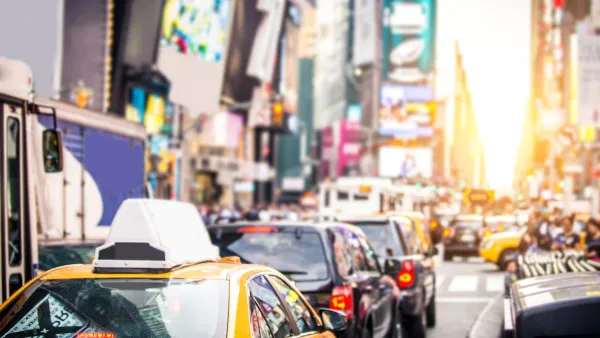Earth Island Journal takes an in-depth look at how and why congestion pricing got the kibosh in New York.
"On Earth Day 2007, Mayor Bloomberg put forth a 30-year redevelopment plan (PlaNYC) for the city that included congestion pricing as "part of an overall commitment to increase investment in mass transit." Although it was one of only 127 environmental initiatives, such as boosting street-side tree planting and protecting wetlands, congestion pricing received a disproportionate amount of attention, and led to a lively and often fractious debate among city and state lawmakers, local residents, and urban planners. A 17-member ad hoc committee was formed to hone the mayor's plan, and dozens of community meetings were held across the city to solicit residents' views. Bloomberg made the issue a top priority, and invested a large amount of his political capital in passing the measure. But the idea ran into stiff resistance. Opponents, particularly city council members and state assembly members who represent the outer boroughs, decried the legislation as a tax on the poor and middle class, one that would turn Manhattan into a golden ghetto. It was an effective populist appeal, an argument that everyone has the right to drive, and that right should not be infringed upon even if, in the case of NYC, the vast majority of commuters do not drive.
Ultimately, Bloomberg's plan, which narrowly made it through the city council, was scrapped by the state legislature in Albany. The NY state legislature often intervenes in city affairs, and reserves the right to oversee many local decisions – for example, the number and type of red light enforcement cameras, bus lane enforcement cameras, and speed limits for traffic calming designs. It is likely the city's authority to charge drivers would have been challenged in court, delaying the plan indefinitely. As it was, the assembly put the idea to rest."
FULL STORY: How NYC's Congestion Pricing Plan Crashed

Analysis: Cybertruck Fatality Rate Far Exceeds That of Ford Pinto
The Tesla Cybertruck was recalled seven times last year.

National Parks Layoffs Will Cause Communities to Lose Billions
Thousands of essential park workers were laid off this week, just before the busy spring break season.

Retro-silient?: America’s First “Eco-burb,” The Woodlands Turns 50
A master-planned community north of Houston offers lessons on green infrastructure and resilient design, but falls short of its founder’s lofty affordability and walkability goals.

Test News Post 1
This is a summary

Analysis: Cybertruck Fatality Rate Far Exceeds That of Ford Pinto
The Tesla Cybertruck was recalled seven times last year.

Test News Headline 46
Test for the image on the front page.
Urban Design for Planners 1: Software Tools
This six-course series explores essential urban design concepts using open source software and equips planners with the tools they need to participate fully in the urban design process.
Planning for Universal Design
Learn the tools for implementing Universal Design in planning regulations.
EMC Planning Group, Inc.
Planetizen
Planetizen
Mpact (formerly Rail~Volution)
Great Falls Development Authority, Inc.
HUDs Office of Policy Development and Research
NYU Wagner Graduate School of Public Service




























